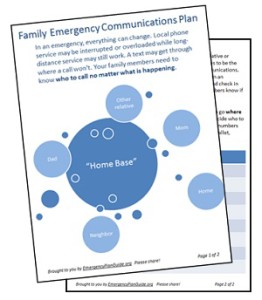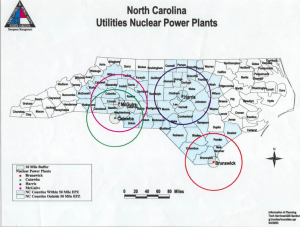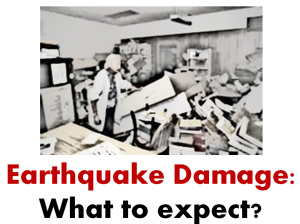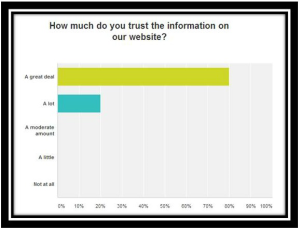(This isn’t the kind of blog post we normally write. But because it’s so much in the news, it seemed important to touch on this emergency situation.)
The more details we learn about the recent home invasion in Washington, D.C., the worse the story gets: loss of property, torture, murder. And a fire set to conceal the evidence.

Secure enough?
Statistics about the frequency of home invasion are hard to come by. But authorities do seem to agree on some basic characteristics of home invasions, and basic steps to combat and even help avoid them. It just seems smart to review them all.
How does a home invasion differ from robbery or burglary?
Robbers and burglars usually act when they see an opportunity. Their crime typically takes place in public, so they are in a hurry and eager to get away as quickly as possible. They resort to force usually only to escape.
Home invaders are very different.
- Most all home invasions are perpetrated violently by a team of two or more people.
- Working together, they deliberately scope out the home and the habits of the family members, planning the crime for days or even weeks.
- They are looking for people who have something of particular value to steal: money, jewelry, drugs.
- They look for households where security is lax or non-existent.
- They count on duplicity, force and intimidation to get into the home and overcome any resistance.
Once inside, they can relax and take all the time they want. In Washington D.C. the invaders made arrangements for money to be delivered, ordered pizza . . . and, of course, ultimately killed the inhabitants before setting fire to the house. Most home invasion robberies result in the death of family members since they have become witnesses to the crime.
What can you do to protect your home?
A home invasion once underway simply can’t turn out well.
So you have to put maximum effort into not letting it happen in the first place.
Recommended measures:
Heighten your awareness.
The better you know your neighbors, the more you and they will know about “what’s normal in our neighborhood.” Get used to noting travel patterns, visitors and their cars. Make note of strange cars driving slowly by or parking on the street. Such behavior could be someone “casing” your neighborhood. Share your concerns with law enforcement.
In an emergency, whether it’s an earthquake, a weather event or a home invasion, your neighbors are the best immediate source of help. Having an active neighborhood CERT group or a Neighborhood Watch program can help bring neighbors together and increase their knowledge and awareness.
Harden your perimeter.
Make sure you have lockable and locked doors and strong, locked windows. A simple door chain or glass door bar is useless in the face of a good kick. And a security system that is left turned off when you are at home is doing no good at all! Keep your system on so a door being opened alerts the house. Know how to use the panic button on the system.
Keep porches and alleyways well lit; check bulbs regularly. Plant bushes with thorns underneath window to discourage people from hiding there or approaching the house that way.
Without becoming totally paranoid, consider what you can do to make it harder for someone to break into the house.
Train your family.
Strong locks and a powerful security system provide no security if family members leave doors unlocked and readily open the door when they hear a knock.
A common ruse employed by home invasion teams is to send someone to the front door pretending to have a package to deliver. (As I was researching this article I read about situations where the “delivery person” was wearing a UPS, a pizza, and even a police uniform.) When the family member opens the door, other team members rush inside, overpowering all residents.
If it makes sense, install a wide-angle peephole in your door and train family members to use it. If you aren’t expecting a delivery, have the person leave the package outside the door and retrieve it later.
Flee.
Plan with your family about how to escape the house in an emergency – whether fire or home invasion. Practice screaming out a command like “Patio!” or “Garage!” Family members should IMMEDIATELY escape the building through that exit, and not come running to your voice to see what’s going on!
Close yourself in a safe room.
A special interior room can be built as a safe room or “panic room” to protect you from intruders or from natural disasters. It typically has extra strong doors and locks and is stocked with emergency supplies along with emergency communications. If you have firearms, or expect shooting, be sure the safe room has bullet absorbing protection you can get behind, and consider where YOUR bullets would hit if you fire through the door or walls. (The costs of such a room vary widely, depending on location and purpose, and the room is best added during construction. But any bathroom or closet may be suitable for conversion to a safe room.)
Fight.
Even in the face of probable injury, you must consider fighting the invaders rather than just giving in. Obviously, if you have weapons readily available, use them.
Once your family is totally restrained and controlled, you are out of options. Do everything you can to avoid this.
Are home invasions increasing?
Again, statistics are indefinite. But it makes sense that as the traditional targets for fast money (convenience stores, gas stations) continue to limit the amount of cash on hand, and to add more surveillance cameras and security alarms, determined criminals will turn to easier targets – homes.
At the risk of being more paranoid than we’d like, it seems that taking a good look at deterring a home invasion just makes sense. I’d be interested to hear your comments on this Advisory.
Virginia
Your Emergency Plan Guide Team










 You have three first-aid kits, don’t you? One in the house, one in the car, and one in your emergency backpack?
You have three first-aid kits, don’t you? One in the house, one in the car, and one in your emergency backpack? Here at Emergency Plan Guide, we have looked several times at the pros and cons of generators while we considered purchasing one for our own neighborhood. And we have told the story of what happened AFTER we purchased it, too!
Here at Emergency Plan Guide, we have looked several times at the pros and cons of generators while we considered purchasing one for our own neighborhood. And we have told the story of what happened AFTER we purchased it, too!


 The first interesting question made me really pleased. The image shows the question and the result: 100% of the respondents trusted the information on the site “a great deal” or “a lot.”
The first interesting question made me really pleased. The image shows the question and the result: 100% of the respondents trusted the information on the site “a great deal” or “a lot.”